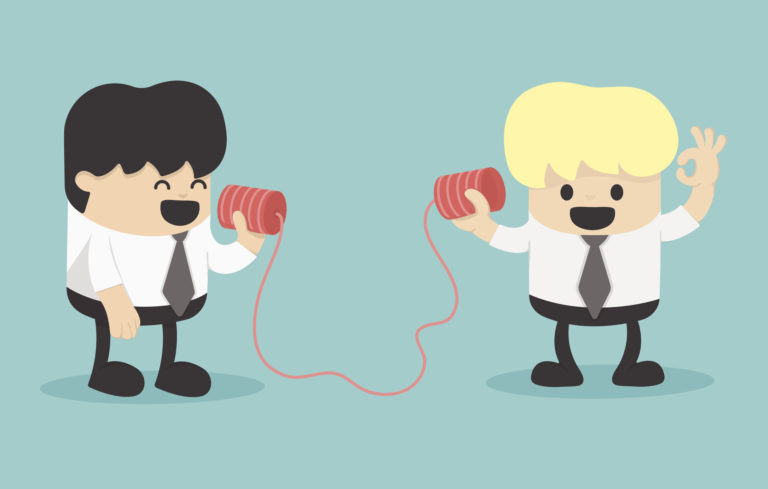What Hawaii Business Owners Can Learn From Other Businesses’ Parental Leave Policies
With all the recent buzz around the advancement of Hawaii’s paid family leave legislation passing through the House and Senate, with the addition of a study to conduct a thorough analysis on the best way to frame the law awaiting the Governor’s signature, it’s no surprise that leave policies across the globe are quickly becoming a hot topic amongst business owners, people managers, and HR experts.
In fact, in today’s candidate-driven job market, family leave policies can give companies a competitive advantage in not only attracting and hiring, but also with retaining top talent. On top of that, businesses benefit from greater employee loyalty and productivity.
According to the Family and Medical Leave Act (FMLA), covered employers in the United States must grant FMLA leave to eligible employees for one or more of the following situations:
- for the birth and care of the newborn child of an employee;
- for placement with the employee of a child for adoption or foster care;
- to care for an immediate family member (spouse, child, or parent) with a serious health condition; or
- to take medical leave when the employee is unable to work because of a serious health condition.
For this blog post, we’ll be focusing primarily on parental leave policies.
So how are other companies and countries approaching leave? What are some of the top companies here in the United States today regarding parental leave in their benefits packages? And what can business owners in Hawaii learn from them in order to create their own leave policy?
How the U.S. Compares with Other Countries
From coast to coast and country to country, parental leave policies differ greatly. According to the Organisation for Economic Co-operation and Development (OECD), the U.S. is the only country among 41 nations that does not mandate any paid leave for new parents. This intergovernmental economic organisation with 35 member countries promotes policies to improve the economic and social well-being of people around the world, and by their definition, parental leave can be segmented into four main categories:
- Maternity Leave
Commonly referred to as “pregnancy leave,” working mothers across many countries have their employment status protected after birth and/or adoption. One of the best maternity leave policies comes from Norway. New Nordic moms can take 35 weeks at full pay or 45 weeks at 80 percent pay.
- Paternity Leave
Employment-protected leave of absence for employed fathers during the first few weeks or months after childbirth is gradually starting to improve in countries with supportive workplace policies in place. Take Iceland for example, where parents can split their nine months of post-childbirth leave.
- Parental Leave
While family leave – or maternity and paternity leave – is what most American consider when they think of parental leave, there are countries that offer employment protection after the initial family leave period. The reality is, in almost half of two-parent households, both parents now work full-time and require flexibility and time-off in order to care for their families. In Lithuania, parents get an additional 156 weeks to share after their maternity/paternity period. Parents have the option to have it paid out at 100% for the first 52 weeks (until the child is turns 1) or 70% for the first 104 weeks (until the child is 2 years old).
- Home-Care Leave
While this type of leave is the least common across the globe, some countries do offer employment-protected leaves of absence that allow at least one parent to remain at home to provide care until the child is two or three years of age. Which countries are leading the way with this? The Czech Republic provides two years of leave while Finland, Slovakia and Estonia all provide three years of paid leave.
While it’s smart to know what other countries are doing in regard to best business practices, there are also plenty of U.S. companies making great strides in their parental leave policies that we can learn from.
Learn from the Leaders of the Pack
Generally speaking, tech giants have been the leader in setting the most flexible and generous parental leave policies. From Facebook to Amazon, these brands understand the value of offering their employees flexible work schedules and parental perks, such as on-site child care, extra cash towards baby necessities, and designated nursing rooms to name a few.
But it’s not just tech companies that are attracting talent with their benefit offerings.
Companies like Bill & Melinda Gates Foundation offers 52 weeks of paid maternity and paternity leave, while Etsy has an inclusive policy with 26 weeks of paid parental leave over the course of two years for biological, adoptive, and surrogate parents. Some of the best parental leave policies even include egg-freezing services and adoption fee reimbursement.
Getting Started: Developing a Parental Leave Policy
A supportive working environment can help employees feel they can bring their best selves to work, benefiting both employees and employers. As business owners in Hawaii evolve their benefits to meet the needs of employees, here’s how to get started when developing a parental leave and perks program:
1. Do Your Research
We shared a snapshot above of what industry leaders are offering in terms of benefits, because it’s always smart to start by looking outside of your four walls. Many companies today have great programs in place, so take some time to research how other organizations are supporting parents. Don’t feel the need to stick to a “traditional” plan either. Some companies put innovative solutions in place that are customized to their own company culture and people.
As you plan for what works best for you, here are a few components to consider:
- Parental Leave
- Adoption Assistance
- Spousal and Domestic Partner Benefits
- Extended Family Care
- Work Environment Accommodations
- On-Site Child Care
- Nursing Mothers Stations/Private Rooms
- Child Care Reimbursement
- Reduced/Flexible Work Hours
2. Figure Out What Works Best For Your Company
While it’s tempting to take the best aspects of all the policies and try to make them fit into your handbook, the reality is every company has unique needs and challenges. Narrowing down your research to companies in your space, at a similar stage of growth, and with a similar employee base can offer you a blueprint of what can potentially work and what could go wrong. From there, you can start putting together pieces and parts of what you think works best for your specific needs.
For example, a real estate firm might be able to offer flexible work-from-home hours while a local furniture shop would not be able to provide employees with the same benefit.
3. Run the Numbers
It’s important to balance between generosity towards your employees and practicality for running a business, so make sure to take a hard look at the data before rolling out a program. At the same time, while it's wise to consider your company's expenses, and the cost and time to replace new employees, should an expecting mother quit due to a company's poor policy, it could cost more than the maternity leave itself.
Try modeling potential programs and considering how they would each impact your workforce and your ability to run the business given the number of potential parents down the road. Being able to back your program with data will make it a better sell if you have to present it to the leadership team as well.
Overall, what can we learn when it comes to parental leave offered in other developed countries and the top companies in the United States?
The most apparent lesson is simple: The U.S. is significantly lagging when it comes to mandating policies to strive for family-friendly workplaces. A supportive working environment can help employees feel they can bring their best selves to work, benefiting both employees and employers. Whether family leave becomes state mandated or not, business owners in Hawaii can enable people to find a balance between their personal and professional lives – so in the long-term, employees will be encouraged to stay with your company.
And when you’re ready to kick off your updated parental leave policy, we’re here to help you manage these benefits.









